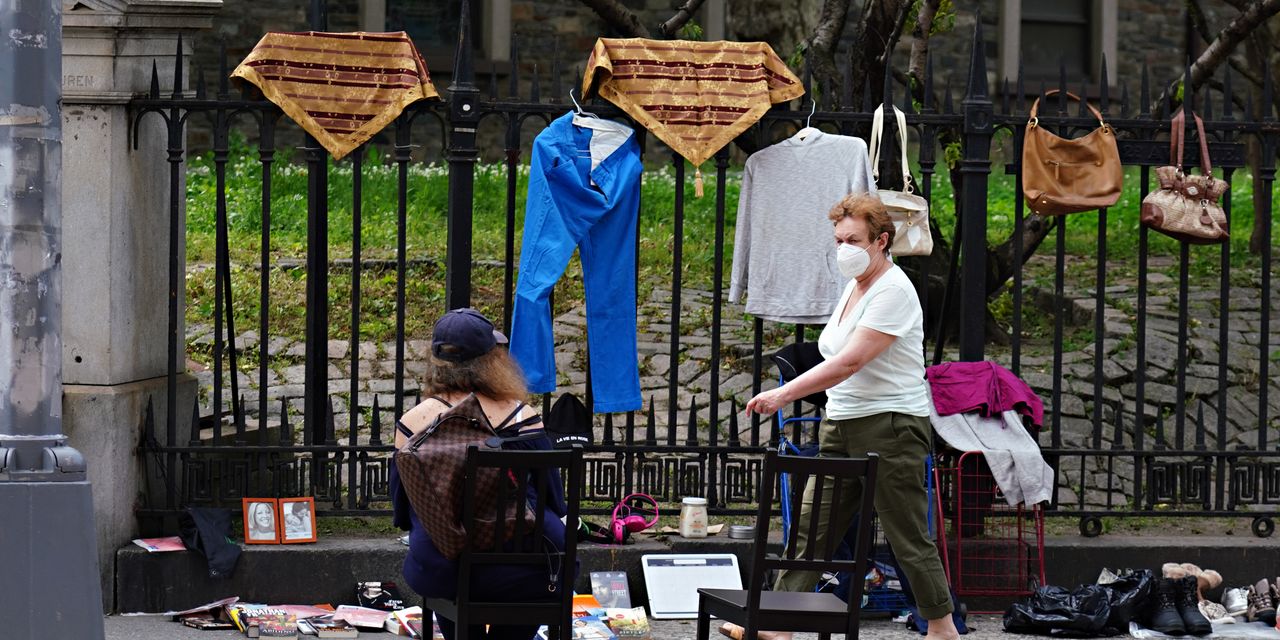
More Americans fell into poverty as the pandemic tore through the country last year, but stimulus checks and unemployment benefits helped many stay afloat financially, according to two separate U.S. Census Bureau measures of poverty released Tuesday.
The official poverty rate climbed to 11.4% in 2020, Census Bureau officials said. The gauge, based on pre-tax cash income, was up from 10.5% one year earlier and marked the first jump in poverty after five years of falling rates. As a result, 3.3 million more people lived in poverty last year compared to 2019, they said.
The median income for American households slipped last year, down to $67,500, an almost 3% drop from one year earlier. A family with two adults and two kids was considered to be in poverty if they made less than $26,246 last year.
It’s a sobering note as families and the U.S. economy keep trying to rebound from 2020 as the pandemic continues. The 2020 poverty rate numbers also arrive as lawmakers debate massive infrastructure spending and expanded social programs. Democrats are eyeing tax hikes on corporation and high-income households, though tax proposals vary.
Why there are two different poverty rates
But another Census gauge released Tuesday adds more context — and a potentially brighter view — to 2020’s economic upheaval. The Census’ so-called “Supplemental Poverty Measure” showed that just over 9% of families were in poverty in 2020, down from 11.8% one year earlier.
The Supplemental Poverty Measure factors in the public assistance, unemployment benefits, tax breaks, and — especially important in this context — the first and second rounds of stimulus checks. Indeed, last year’s stimulus checks kept 11.7 million people out of poverty last year, according to the Census researchers. That’s second only to Social Security, which kept 26.5 million people out of poverty last year, the data showed.
The first stimulus checks paid up to $1,200 to eligible adults and up to $500 per eligible child under the $2.2 trillion CARES Act passed in March 2020. The second checks paid up to $600 for adults and children as part of the $900 billion spending package passed in late December.
Unemployment benefits last year stopped 5.5 million people from slipping into poverty, the Census numbers said. That’s partly because unemployed Americans received extra benefits from the federal government on top of state jobless benefits. Another round of enhanced jobless benefits in 2021 just ended.
Measuring the impact of government aid
2020 marks the first time that the Supplemental Poverty Measure — created in 2009 — is lower than the official poverty rate, according to Liana Fox, chief of the Poverty Statistics Branch in the Census’ Social, Economic and Housing Statistics Division.
“This really highlights the importance of our social safety net,” Fox said at a Tuesday press conference. The Supplemental Poverty Measure is it is not used to determine eligibility for public assistance programs, she noted.
Without the stimulus checks, the supplemental measure’s poverty rate would have been more than three percentage points higher, at 12.7%, Fox said.
“Without government intervention, the pandemic and ensuing economic shock would have translated into even more widespread devastation and large-scale losses of incomes and a spike in poverty” wrote Elise Gould, senior economist at the left-leaning Economic Policy Institute.
The estimated impact of the first and second round of stimulus checks is in tune with different research on the power of the cash assistance. More than 12 million people would be living in poverty right now without the second and third stimulus check (worth $1,400), according to research over the summer from the Urban Institute.
2021 has other government assistance in store that could make a difference in household budgets and poverty rates. For example, the $1.9 trillion American Rescue Plan passed in March authorized the third round of stimulus checks, as well as advance payments of the child tax credit, which was expanded under the bill.
All together, the extra spending could reduce child poverty by half, President Joe Biden has said.
Poverty appears to be increasing in 2021
The discrepancy between the Census Bureau’s two poverty rate numbers highlight the flaws of the official poverty measure, according to James Sullivan, a professor and economist at the University of Notre Dame.
The Supplemental Poverty Measure “is a better indicator of what’s going on — or, what went on,” he said.
2021 has brought some new warning signs, said Sullivan. “What we are finding is poverty has ticked upward in 2021, and that includes in most recent months,” he said, pointing to data from an ongoing Census household income survey.
There are two forces at work: declining benefits and a labor market that, so far, hasn’t rebounded as sharply as hoped despite a record number of job openings. “That recovery has really slowed,” he said. The economy added just 235,000 jobs in August, according to the recent jobs report.
“If it doesn’t speed up, we are likely to see higher poverty rates in 2021” but they may decline in the long run as people find jobs, he added.





